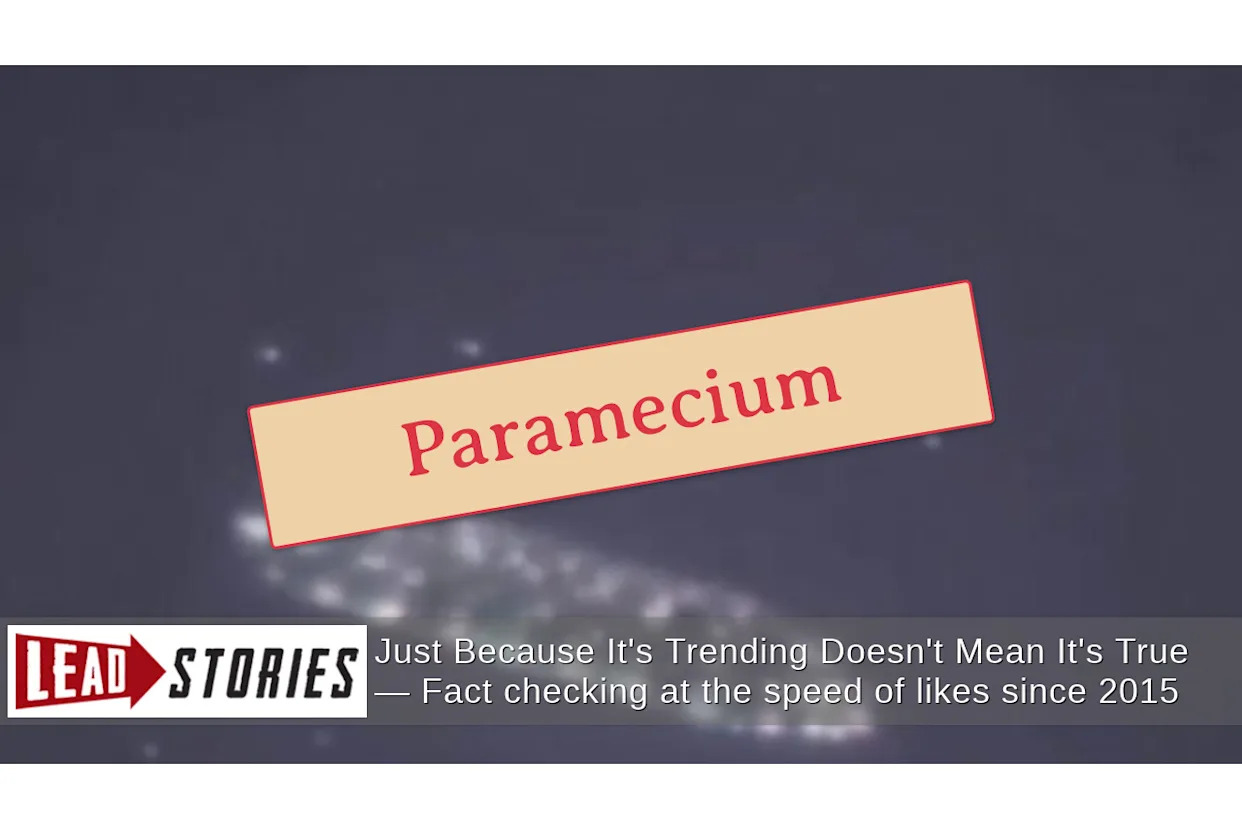Science
Viral Video Misidentified as Comet 3I/ATLAS Revealed as Paramecium

A video purported to show new footage of the interstellar comet 3I/ATLAS has been debunked as a misidentification. The clip, which circulated on social media, actually depicts a microscopic organism known as a paramecium. This misinformation emerged from an uncredited post on X, shared by user @BGatesIsaPyscho on October 27, 2025.
The misleading video was presented alongside a caption that excitedly claimed, “🚨 New 3I/Atlas Footage just dropped!!” A reverse Google image search conducted on October 29, 2025, revealed no credible sources backing the video’s claim. Instead, the search engine’s artificial intelligence adopted the erroneous captions, mistakenly identifying the organism as the comet.
Expert Analysis Confirms Misidentification
To clarify the situation, Lead Stories contacted Jack A. Gilbert, a microbiologist and professor at the Scripps Institution of Oceanography at the University of California, San Diego. Responding via email on October 29, 2025, Gilbert confirmed the organism in the video is indeed a paramecium, likely found in freshwater environments. He noted that enhanced imaging techniques could facilitate a more precise identification.
As misinformation spreads easily in the digital age, it is crucial to verify claims with scientific expertise. Gilbert’s credentials as the Associate Vice Chancellor for Marine Science and Director of the Microbiome and Metagenomics Center lend weight to his analysis.
Navigating the Landscape of Space and Science Misinformation
The NASA website, where updates about Comet 3I/ATLAS would typically be found, currently displays a notice indicating that updates are paused due to a lapse in federal government funding. The last confirmed images of Comet 3I/ATLAS were posted in July and August 2025, none of which resemble the viral video of the paramecium.
Additionally, an image released by the National Optical-Infrared Astronomy Research Laboratory (NOIRLab) on September 4, 2025, illustrates the comet streaking through a dense star field, captured by the Gemini Multi-Object Spectrograph at Cerro Pachón in Chile. The photograph reveals vibrant star trails caused by the comet’s movement, providing a stark contrast to the microscopic video circulating online.
This incident underscores the importance of critical thinking and fact-checking in the age of social media, where visual content can easily mislead. Misinformation not only affects public understanding of scientific phenomena but can also erode trust in credible sources. Further investigation into the claims surrounding Comet 3I/ATLAS can be found through additional reports by Lead Stories.
-

 Science2 weeks ago
Science2 weeks agoResearchers Challenge 200-Year-Old Physics Principle with Atomic Engines
-

 Politics2 weeks ago
Politics2 weeks agoNHP Foundation Secures Land for 158 Affordable Apartments in Denver
-

 World5 days ago
World5 days agoBoeing’s Aircraft Production: Assessing Numbers and Challenges
-

 Entertainment5 days ago
Entertainment5 days agoSyracuse Stage Delivers Lively Adaptation of ‘The 39 Steps’
-

 Health2 weeks ago
Health2 weeks agoNeuroscientist Advocates for Flag Football Until Age 14
-

 Lifestyle2 weeks ago
Lifestyle2 weeks agoLongtime Friends Face Heartbreak After Loss and Isolation
-

 Lifestyle4 days ago
Lifestyle4 days agoTrump’s Push to Censor National Parks Faces Growing Backlash
-

 Lifestyle5 days ago
Lifestyle5 days agoRed Bluff High School’s Elli Nolan Named Rotary Student of the Month
-

 Science5 days ago
Science5 days agoAI Misidentifies Doritos Bag as Gun, Triggers Police Response
-

 World2 weeks ago
World2 weeks agoGlobal Military Spending: Air Forces Ranked by Budget and Capability
-

 Health2 weeks ago
Health2 weeks agoFDA Launches Fast-Track Review for Nine Innovative Therapies
-

 Business2 weeks ago
Business2 weeks agoSpirit Airlines Cuts Workforce with Furloughs for 365 Pilots









